By Jorge Perdomo
Updated July 16, 2024
Scientific Name: Pterophyllum scalare
Common Names: Freshwater Angelfish, Common Angelfish
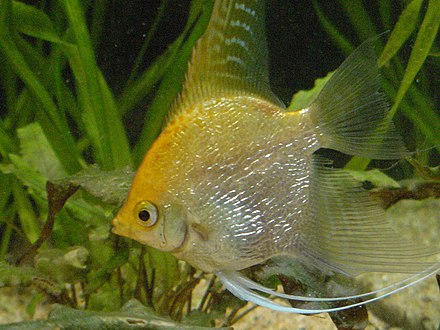
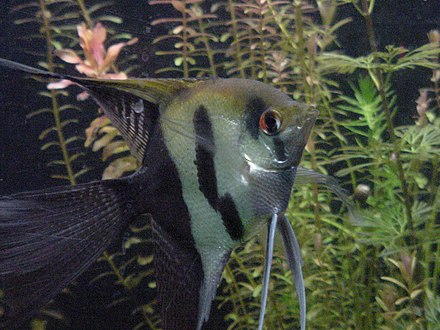
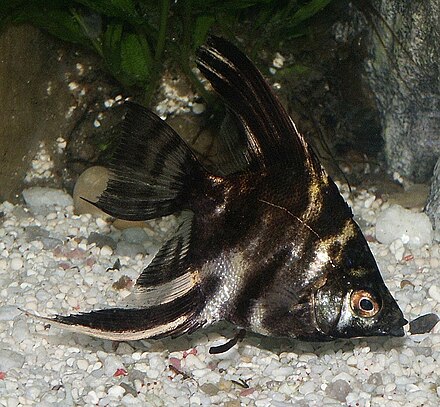
Appearance
Freshwater Angelfish are known for their unique, elegant appearance. They have a laterally compressed body, long triangular dorsal and anal fins, and a wide variety of color patterns and fin shapes. Common colorations include silver, black, marble, and gold. They can grow up to 6 inches in length and 8 inches in height, making them a striking centerpiece in any aquarium. Widespread breeding has led to a plethora of color morphs, providing a variety of options for aquarists.
Additionally, there are three main types of angelfish: Scalare, Leopoldi, and Altum. This profile focuses on the Scalare, the most common type, which includes all the colorful angelfish varieties.
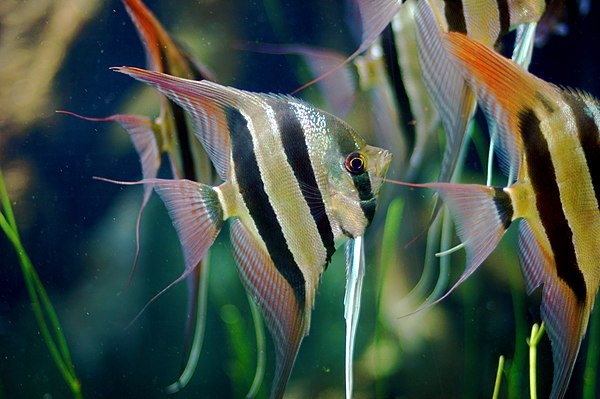
Natural Habitat
Freshwater Angelfish are native to the slow-moving rivers and swamps of the Amazon Basin in South America, as well as a few other river basins. In the wild, they are found in large schools when they are young and become more solitary as they mature, though they still enjoy the company of others. They thrive in blackwater rivers, which are characterized by leaf and wood-strewn bottoms, tannins, shaded areas along the riverbanks, and abundant tetra fish, which are a natural part of their diet.
Tank Requirements
- Tank Size: Minimum of 29 gallons for a single angelfish, but larger tanks are recommended due to their territorial behavior. For multiple angelfish, a larger tank with a group of 4 to 6 is recommended to spread out any bullying.
- Substrate: Soft, sandy, or fine gravel substrate to mimic their natural habitat.
- Plants: Live plants such as Amazon swords, Java ferns, and Vallisneria are ideal. Floating plants can also provide shaded areas.
- Decor: Provide plenty of hiding spots with driftwood, rocks, and artificial caves.
- Filtration: Use a gentle filtration system to maintain clean water without creating strong currents.
Water Conditions
- Temperature: 75-82°F (24-28°C)
- pH: 6.5-7.5
- Hardness: 3-10 dGH
- Water Changes: Regular water changes (20-30% weekly) to maintain water quality.
Angelfish prefer slightly acidic to neutral water, but they are quite adaptable and can thrive in a wider range of parameters due to years of captive breeding.
Diet
Angelfish are omnivorous and require a varied diet for optimal health. In the wild, they feed on small insects, crustaceans, and plant matter. In captivity, their diet should include:
- High-quality flake or pellet food
- Frozen or live foods such as brine shrimp, bloodworms, and daphnia. Live foods especially can be enticing for young angelfish or individuals that are reluctant to eat
- Fresh vegetables like spinach and zucchini
Feed them small amounts 2-3 times a day to prevent overfeeding and maintain water quality.
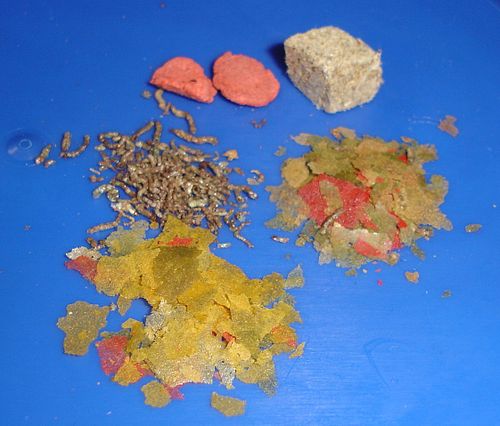
Behavior and Compatibility
Angelfish are generally peaceful but can become territorial, especially during breeding. They do well in community tanks with similarly sized, non-aggressive fish. Suitable tank mates include:
- Larger tetras that are more than 3 in (like black skirt tetras and lemon tetras)
- Corydoras catfish
- Other Peaceful South American Cichlids
- Bristlenose plecos
Avoid housing them with very small fish or fin-nippers like tiger barbs.
Breeding
Breeding angelfish can be a rewarding experience. They form monogamous pairs and exhibit excellent parental care. To breed them successfully:
- Pair Selection: Start with a group of 6-8 juveniles and allow them to pair off naturally.
- Breeding Tank: Set up a separate breeding tank with a flat surface (like a slate or broad leaf) for them to lay eggs.
- Water Conditions: Maintain the temperature around 80-82°F and keep the water clean.
- Egg Care: The parents will clean the chosen surface and lay hundreds of eggs. Both parents guard and fan the eggs to ensure proper oxygenation.
Once the eggs hatch, the parents continue to care for the fry, moving them to different locations and protecting them from potential threats.
The best bet for breeding is to buy a group of 4 to 6 and see which ones eventually pair up.
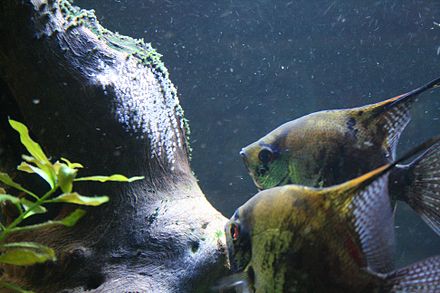
Health and Disease
Freshwater Angelfish are generally hardy but can be susceptible to common freshwater fish diseases such as:
- Ich (white spot disease)
- Fin rot
- Bacterial infections
- Parasites
Maintaining optimal water quality, a balanced diet, and avoiding stress can help prevent these issues. Quarantine new fish before adding them to the main tank to reduce the risk of introducing diseases.
With their stunning appearance and engaging behavior, Freshwater Angelfish can be a delightful addition to any aquarium. By providing the right conditions and care, you can enjoy the beauty and elegance of these fish for many years.

